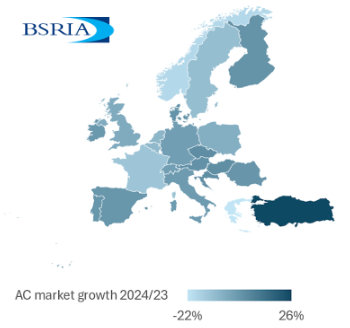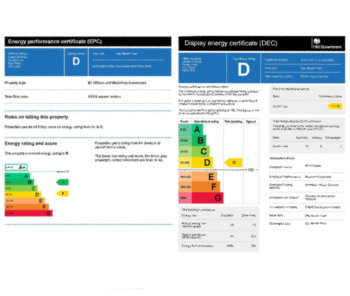Managing HVAC Noise in Shopping Centres: Balancing Comfort and Acoustics
Contents |
[edit] Introduction
In bustling shopping centres, the symphony of footsteps, conversations, and retail activities often forms the background of the shopping experience. Yet, there's one element that should remain inconspicuous: the noise generated by the Heating, Ventilation, and Air Conditioning (HVAC) systems. While these systems are essential for maintaining comfort, the challenge lies in controlling their noise levels to ensure a peaceful and pleasant shopping atmosphere. In this article, we delve into the complex task of managing HVAC noise in shopping centres and explore strategies to strike the perfect balance between comfort and acoustics.
[edit] Understanding the Impact of HVAC Noise
HVAC systems play a crucial role in maintaining temperature, air quality, and ventilation within retail spaces. However, they can also be a source of unwanted noise, disrupting the tranquil shopping environment. High levels of HVAC noise not only detract from the overall experience but also affect shopper satisfaction and the perception of the shopping centre.
[edit] Challenges of Noise Management
- Noise Propagation: The noise generated by HVAC systems can travel through ductwork and ventilation pathways, extending far beyond the immediate vicinity of the equipment. This can result in noise disturbances in areas where shoppers expect quietness, such as near stores, seating areas, and restrooms.
- Open Layouts: Many modern shopping centres adopt open layouts, allowing sound to travel freely across different sections. While this fosters a sense of connectivity, it can also lead to amplified noise levels if proper noise management measures are not in place.
- Architectural Elements: Architectural designs that prioritise aesthetics might inadvertently contribute to noise challenges. Hard surfaces and reflective materials can bounce sound, leading to echo and amplification.
[edit] Solutions for Noise Control
- Strategic Placement: Proper placement of HVAC equipment is crucial. By locating noisy equipment away from shopper pathways and utilising quieter models, noise can be effectively contained.
- Noise Barriers and Insulation: Implementing noise barriers and insulation materials within ductwork and around equipment can help dampen sound. These solutions absorb and block noise, preventing its transmission to adjacent areas.
- Sound Masking: Sound masking systems introduce a controlled level of background sound, effectively reducing the perception of HVAC noise. This creates a more consistent and peaceful auditory environment for shoppers.
- Vibration Isolation: Mounting HVAC equipment on vibration isolation pads or platforms reduces the transmission of vibrations through the building structure, minimising the impact of low-frequency noise.
- Acoustic Design: Collaborating with architects and acoustic consultants during the design phase can lead to better noise management. Incorporating sound-absorbing materials, baffles, and diffusers into the architectural design can mitigate noise issues.
- Regular Maintenance: Well-maintained HVAC systems are quieter and more efficient. Routine inspections and maintenance help identify and address potential noise sources before they escalate into disturbances.
[edit] Conclusion
The challenge of managing HVAC noise in bustling shopping centres requires a delicate balance between comfort and acoustics. As customers seek a serene and pleasant shopping environment, addressing noise challenges becomes paramount. By employing strategies such as strategic equipment placement, noise barriers, sound masking, and acoustic design, shopping centres can successfully create an ambience that complements the shopping experience. In the end, it's about maintaining a harmonious environment where shoppers can focus on their retail journey without the distractions of intrusive HVAC noise.
--Building Ventilation Solutions
[edit] Related articles on Designing Buildings
- Air conditioning.
- Airborne noise
- Approved Document E.
- Audio frequency.
- Chiller unit.
- Cooling systems for buildings.
- Constant air volume.
- Data noise.
- Decibel.
- Ductwork.
- Evaporative cooling.
- Fan coil unit.
- Flanking sound.
- Heating.
- Heat load
- How to Use Your Air Conditioning Energy Assessments to Reduce Energy Costs.
- HVAC.
- Impact noise
- Mechanical ventilation.
- Noise barrier.
- Noise level.
- Noise pollution
- Noise v sound
- Tempering heating.
- Thermal comfort.
- Underfloor air distribution.
- Variable air volume VAV.
- Variable refrigerant flow VRF.
- Ventilation.
Featured articles and news
Heritage building skills and live-site training.
Shortage of high-quality data threatening the AI boom
And other fundamental issues highlighted by the Open Data Institute.
Data centres top the list of growth opportunities
In robust, yet heterogenous world BACS market.
Increased funding for BSR announced
Within plans for next generation of new towns.
New Towns Taskforce interim policy statement
With initial reactions to the 6 month policy update.
Heritage, industry and slavery
Interpretation must tell the story accurately.
PM announces Building safety and fire move to MHCLG
Following recommendations of the Grenfell Inquiry report.
Conserving the ruins of a great Elizabethan country house.
BSRIA European air conditioning market update 2024
Highs, lows and discrepancy rates in the annual demand.
50 years celebrating the ECA Apprenticeship Awards
As SMEs say the 10 years of the Apprenticeship Levy has failed them.
Nominations sought for CIOB awards
Celebrating construction excellence in Ireland and Northern Ireland.
EPC consultation in context: NCM, SAP, SBEM and HEM
One week to respond to the consultation on reforms to the Energy Performance of Buildings framework.


















